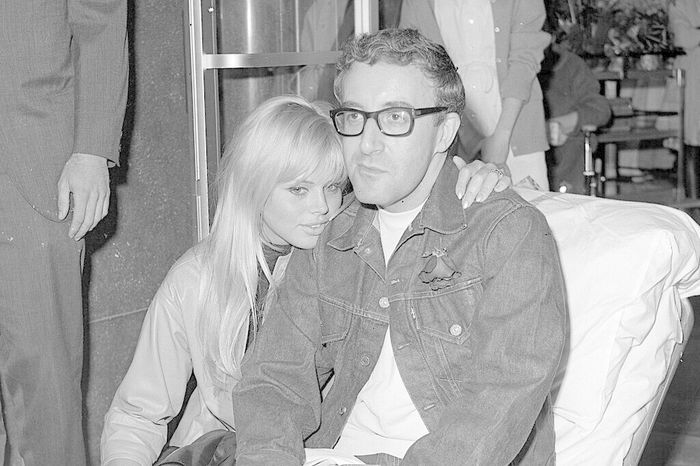Dancing to someone else’s tune: Sidi Larbi Cherkaoui
Georgia Fullerton explores the impossibility of replicating the work of the artists we love

Whether it be a musician, a writer, a painter or a choreographer, many people feel that a particular artist speaks to them. An ineffable connection exists, drawn not solely from enjoyment, but from something deeper. Perhaps feeling that a certain poet has managed to convey emotions that you could never express, or a piece of music inexplicably moved you to tears. You may take the words of a poem or the tune of a song with you through your quotidian routine. A quote or a song lyric may stick to you; you may reuse it, think about it, dwell on it, allow it to echo around your head, or even attempt to recreate it. An artist may influence you, but there is a challenge in using this influence as inspiration for your own artistic expression.
This proved particularly challenging when I attempted to take inspiration from one of my favourite choreographers and create a solo dance rooted in his style. I briefly explored Sidi Larbi Cherkaoui when studying dance a few years ago and instantly felt captivated by his style and unique movement quality. Cherkaoui is a well-known Flemish-Moroccan dancer-choreographer known for his boundary breaking combinations of dance styles. I would highly recommend watching his pieces! My top picks include Faun (2009) and zero degrees (2005)). I felt entranced by his works, yet when attempting to inhabit his style, I could never quite embody the way it made me feel as a spectator.
“The rhythm of your body becomes the haunting rhythm of a line of poetry”
Dance requires the body to take up the role of both pen and page, experimenting with the limits of your mind and your body. The rhythm of your body becomes the haunting rhythm of a line of poetry, the shapes made by your body become the captivating composition of a painting. Cherkaoui’s style spoke to me, yet my body could not speak back. When trying to dance on Cherkaoui’s page, I could never quite reach his movement, physical and emotional. This ineffability (regarding communication with the body, not with words) of his style and of dance in general meant that I could not sing the tune of his dance in my day to day: it was irreplicable, unlike the recitation of a quote or the humming of a tune.
“The opening solo allows the music to melt into the body, an inhabitation of the music that is impossible to replicate”
Yet the connection to Cherkaoui persisted. His piece Faun (2009) hypnotized me. The liquid movements of James O’Hara and the contortions of Daisy Phillips pushed through the corporeal and into the emotional. Accompanied by Claude Debussy’s impressionistic music, the opening solo (danced by O’Hara) allows the music to melt into the body, an inhabitation of the music that is impossible to replicate. Cherkaoui asked composer Nitin Sawhney to interrupt Debussy’s composition with his own musical language, creating dialogue between the accompaniments as they glide almost unnoticeably from one style and culture to another.
The dance seems organically crafted, yet it is not purely exploratory movement which could recreate the style of Cherkaoui. I had to try and create a dialogue between the mind and the body; a paralinguistic expression of how his choreography spoke to me, as I felt that trying to recite his movements with my body was only shallow mimicry. Dance is not only movement, poetry is not only words, music is not only sounds. Inhabiting a style of a much loved artist comes with the challenge of that ineffable connection.
Dance, like all art, can be both deeply individual and personal yet it can also reach outwards and capture a collective. Cherkaoui’s works are often politically grounded, spanning both the macrocosmic and microcosmic. His 2005 collaborative piece zero degrees (working with Akram Khan) begins with a gestural sequence, accompanied by the live spoken voices of both Cherkaoui and Khan. The piece explores dual identity, borders and the concept of transformation; it weaves individual and personal movements of the body, with the overall movement of identity. The opening sequence picks up on often forgotten gestures which go along with similarly often forgotten words. Filler words and habitual gesticulations create a recognisable identity, without the need for elaborate language or movement. The subtleties are what really tell the story. Here there is a conversation between what is literally said and what is said with the body. It creates a space for recognising human mistakes and thought.
There is a moment where Cherkaoui and Khan stutter on the word “predominantly,” and their gesticulating hands also stutter, as if pulled along by their voices. One united voice is created, fusing the body with the words. It is this voice which speaks to me. The connection to an artist is a double-voiced discourse, so, when attempting to inhabit Cherkaoui’s voice, I needed to recognise my own.
 Comment / Cambridge’s tourism risks commodifying students18 April 2025
Comment / Cambridge’s tourism risks commodifying students18 April 2025 News / Cambridge student numbers fall amid nationwide decline14 April 2025
News / Cambridge student numbers fall amid nationwide decline14 April 2025 News / Greenwich House occupiers miss deadline to respond to University legal action15 April 2025
News / Greenwich House occupiers miss deadline to respond to University legal action15 April 2025 Comment / The Cambridge workload prioritises quantity over quality 16 April 2025
Comment / The Cambridge workload prioritises quantity over quality 16 April 2025 News / Varsity ChatGPT survey17 April 2025
News / Varsity ChatGPT survey17 April 2025





